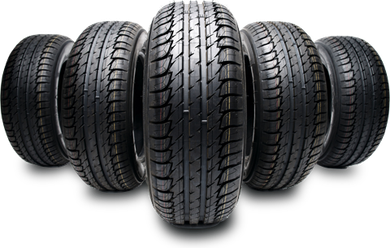Wide Option of Tires Morris IL: Discover the Perfect Suitable For Your Vehicle
Wide Option of Tires Morris IL: Discover the Perfect Suitable For Your Vehicle
Blog Article
Tire Service: The Effect of Climate Problems
When it concerns making certain optimal efficiency and safety and security when driving, comprehending the effect of weather on tire solution is vital. From scorching heat to icy roads, each climate component can considerably affect tire functionality and general driving experience. By diving right into the effects of varying weather condition problems on tires, vehicle drivers can gain useful understandings that may improve their automobile's efficiency and longevity. In this discussion, we will check out the complex partnership between weather conditions and tire service, dropping light on the value of weather-specific tire upkeep techniques and factors to consider.
Heat and Tire Performance
When revealed to heats, tires experience modifications in efficiency that can considerably impact lorry safety and security and handling. The warm generated from prolonged driving or heat problems triggers the tire rubber to soften, causing minimized walk life and enhanced wear. As the rubber becomes softer, the tire's grasp when traveling reduces, impacting braking ranges and general traction. In extreme instances, extreme warm can even create tire blowouts, presenting a serious safety risk to the lorry and its passengers.
In addition, high temperatures can speed up the procedure of tire aging, creating the rubber to weaken a lot more promptly. To mitigate the impacts of warm on tire efficiency, drivers ought to on a regular basis check their tire pressure, turn tires to make sure also put on, and inspect for any indications of damages.
Winter Results
Cold climate problems can have a substantial impact on tire performance and safety. In cold climate, tires might likewise lose air pressure extra swiftly, which can impact dealing with and fuel efficiency.
To minimize the impacts of winter on tires, it is crucial to regularly examine tire pressure and inflate them to the manufacturer's suggested levels. Using winter months or all-season tires created for winter problems can also boost traction and grip on icy or snowy roadways - tire shop morris. Correct tire maintenance, consisting of routine inspections for wear and damages, becomes a lot more critical throughout colder months to make sure optimal efficiency and safety
Rainy Issues Impact
Throughout stormy problems, tire efficiency and security can be substantially affected by the damp roadway surfaces and decreased exposure. The walk pattern of tires plays a vital function in preserving traction on wet roadways. Tires with damaged footsteps are much more prone to hydroplaning, where a layer of water develops in between the roadway and the tire surface area, bring about loss of traction. To combat this, drivers need to on a regular basis evaluate their tires for adequate tread deepness and think about purchasing tires particularly designed for damp problems.

Snow and Tire Safety
Snow-covered roadways pose special obstacles for chauffeurs, stressing the significance of correct tire selection and upkeep. When driving in snowy problems, having the right tires can make a substantial difference in safety and security and efficiency. Winter tires are made with special rubber substances and step patterns to supply much better grip on snow and ice contrasted to all-season tires. The much deeper footsteps and sipes of wintertime tires help grip the road much better, lowering the risk of slipping and moving.
In addition to making use of winter tires, it is important to guarantee they are appropriately blown up. Winter can cause tire pressure to go down, affecting grip and handling (morris tire and see this alignment). On a regular basis examining and keeping the proper tire stress is crucial for optimum efficiency in snowy problems

Weather-Related Tire Maintenance
When encountered with various climate conditions, appropriate tire maintenance ends up being a crucial element of vehicle find security and efficiency. Weather-related tire maintenance includes a variety of practices targeted at making certain optimal tire feature and long life in different weather condition circumstances. One key element of weather-related tire upkeep is tire stress regulation. Changing temperature levels can cause tire pressure to vary, influencing grip and fuel effectiveness. Consistently checking and adjusting tire stress according to manufacturer suggestions is necessary for secure driving in changing weather conditions. Furthermore, tire walk deepness plays a substantial duty in taking care of different weather condition aspects. Tires with adequate step deepness offer better hold on wet or icy roads, minimizing the danger of skidding or hydroplaning. When walk wear reaches a certain depth is essential for keeping grip and stability in unfavorable weather, inspecting tire tread regularly and changing tires. By focusing on weather-related tire upkeep, motorists can improve safety, improve lorry efficiency, and extend the life expectancy of their tires.
Verdict
To conclude, climate condition have a considerable influence over here on tire efficiency and safety. From warm affecting tire stress and wear to winter minimizing traction, it is necessary to consider the weather condition when maintaining and utilizing tires. Stormy problems can decrease hold and bring about hydroplaning, while snow can increase the danger of crashes if tires are not appropriately equipped. Weather-related tire upkeep is critical in making sure optimum efficiency and security when traveling.
In this conversation, we will certainly explore the elaborate connection in between climate conditions and tire service, shedding light on the value of weather-specific tire upkeep techniques and factors to consider.

Report this page